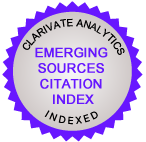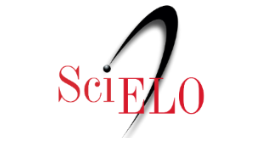Ciberactivismo y solidaridad social en la web 2.0: “el Desafío Levantemos Chile” en la red social Facebook.
-
Álvaro Elgueta Ruiz
 alvaroelgueta@santotomas.cl
alvaroelgueta@santotomas.cl
-
Carolina Acuña Contreras
 cacuna@tvn.cl
cacuna@tvn.cl
Descargas
Resumen
El siguiente artículo presenta los resultados de una investigación que analiza durante dos meses el uso dado por los administradores a la fanspage del “Desafío Levantemos Chile” en la Red Social Facebook, con el objeto de comprender y valorar las nuevas formas de comunicación a través de Internet con fines de activismo social y/o ciberactivismo. A través de un diseño no experimental ex post facto, mediante entrevistas en profundidad a los encargados de la campaña digital y a un comunicador experto en nuevos medios; más un análisis de contenido de la cuenta de Facebook de esta iniciativa, se apreciaron las características en el uso y manejo dado por éstos en dicha plataforma. Entre los hallazgos destaca que los encargados de la campaña digital coinciden en los múltiples beneficios que ofrece la web 2.0, entre los que destacan su gratuidad, alcance y masividad. Sin embargo, la falta de una estrategia integral en la preparación y control de los contenidos publicados hizo que este sitio resultara insuficiente para viralizar la causa ciberactivista. Finalmente, con este estudio se busca reflexionar sobre las posibilidades de movilización de la web 2.0 y, en especial, de los Sitios de Redes Sociales.Palabras Clave
BERELSON, B. (1971). Content analysis in commication research. Hafner Publishing Company:New York.
BERGANZA, M. R. & RUIZ. J. A. (2005). Investigar en Comunicación. McGraw- Hill: Madrid.
BIMBER, B.; FLANAGIN, A.J. y STOHL, C. (2005). Reconceptualizing Collective Action in the Contemporary Media Environment, Communication Theory, Vol. 15, N° 4: 365-388.
BOYD D. & ELLISON N. (2007). “Social Network Sites: Definition, History, and Scholarship”, Journal of Computer-Mediated Communication, N°13: 211.
COBO, C. & PARDO, H. (2007). Planeta Web 2.0, coeditado por Grup de Recerca D'interaccions Digitals y Flacso México, 27,39 ,44.
DE UGARTE, D. (2008). El poder de las redes. Manual para personas, colectivos y empresas abocadas al ciberperiodismo, Revista Universitaria de Treballs Académics, No1, Santiago.
EARL, J. & KIMPORT, K. (2009). Movement Societies and Digital Protest: Fan Activism and Other Nonpolitical Protest Online, Sociological Theory, Vol. 27, N°: 220-243.
FERRADA, M. (2003). Weblogs o bitácoras: un recurso de colaboración en línea, Universidad Técnica de Santiago, 2003.
FRIEDMAN, E.J. (2005). The Reality of Virtual Reality: The Internet and Gender Equality Advocay in Latin America, Latin America Politics and Society, Vol. 47, N° 3: 1-34.
FUMERO, A. & ROCA, G. (2007). La web 2.0, Fundación Orange: Madrid.
ILLIA, L. (2003). Passage to cyberactivism: how dynamics of activism change, Journal of Public Affairs, Vol. 3, N° 4: 326-337.
KENDZIOR, S. (2011). Digital distrust: Uzbek cynicism and solidarity in the Internet Age, American Ethnologist, Vol. 38, N° 3: 559- 575.
KIMPORT, K. (2011). Alternative and Activist New Media, Journal of the American Society for Information Science and Technology, Vol. 62. N° 8: 1649-1651.
LANGMAN, L. (2005). From Virtual Public Spheres to Global Justices: A Critical Theory of Internetworked Social Movements, Sociological Theory, Vol. 23, N° 1: 42-74.
MARTIN, I. (2003). Los actores políticos e Internet. Retos y cambios en la política tradicional (Conferencia). VI Congreso AECPA, Barcelona: Facultad de Ciencias Políticas y Sociología. Universidad Complutense de Madrid.
ORIHUELA, J. L. (2006). La revolución de los Blogs. La esfera de los libros: Madrid.
RIFFE, D.; AUST, C. & LACY, S. (1993). The Effectiveness of Random, Consecutive Day and Constructed Week Sampling in Newspaper Content Analysis, JMC Quaterly, N° 70: 133-139.
SIERRA BRAVO, R. (1999). Técnicas de Investigación Social: Teoría y Ejercicios. Paraninfo: Madrid.
SUAZO, S.; MARTÍNEZ, J. & ELGUETA, A. (2011). Redes sociales como herramientas de ciberactivismo: el caso de los grupos de Facebook en Chile y el Gran Concepción (2009), Ecos de la Comunicación, No 4: 123-159.
SWAIN, D. (2011). Complex Words: Digital Culture, Rhetoric and Professional Communication, Journal of American Society for Information Science and Technology, Vol. 62, N° 8: 1645-1647.
TAYLOR V. & VAN DYKE, N. (2007). “Get up, Stand up”: Tactical Repertories of Social Movements, en The Blackwell Companion to Social Movements: 262-293.
TURNBULL, N. (2001). Issues and crisis management in a convergent environment, Journal of Public Affairs, Vol. 1, N° 1: 85-92.
WALKER, J. (2008). Routledge Encyclopedia of Narrative Theory en:
http://jilltxt.net/archives/blog_theorising/final_version_of_weblog_definition.html
Artículos similares
- Natalia Raimondo Anselmino, Alejandro Sambrana, Ana Laura Cardoso, José Rostagno, Recursos paratextuales y paralingüísticos en las fanpages de los periódicos argentinos Clarín y La Nación. Atributos del discurso de la prensa en las redes , Perspectivas de la Comunicación: Vol. 12 Núm. 2 (2019): julio - diciembre
- Fernando Fuente-Alba, Oscar Basulto, Alberto Amigo, Facebook como herramienta discursiva del movimiento feminista chileno del 2018 , Perspectivas de la Comunicación: Vol. 17 (2024): Enero - diciembre
- Diego Germán Vigna, Ser autor y hacer archivo en la Web. Sobre velocidades y formas de intervención en revistas culturales digitales y plataformas sociales desde el contexto argentino , Perspectivas de la Comunicación: Vol. 10 Núm. 1 (2017): Enero - Agosto
- Baal Ulises Delupi, ¡Carnaval, toda la vida! Discursos artivistas de resistencia en Barcelona: el caso Enmedio , Perspectivas de la Comunicación: Vol. 15 Núm. 1 (2022): enero - junio
- Esteban Torres, El sistema intercomunicacional: de los medios al cambio social mundial , Perspectivas de la Comunicación: Vol. 16 Núm. 1 (2023): enero - junio
- Alfredo Arceo Vacas, Rafael Barberá González, Sergio Álvarez Sánchez, Contexto de percepción generado en Twitter para los debates electorales españoles de diciembre de 2015 y junio de 2016: tratamiento de los factores de credibilidad por los candidatos , Perspectivas de la Comunicación: Vol. 13 Núm. 2 (2020): julio - diciembre
- Francisco Sierra Caballero, Salomé Sola-Morales, Espacio público oposicional y ciberactivismo, una lectura materialista de la acción conectiva , Perspectivas de la Comunicación: Vol. 13 Núm. 2 (2020): julio - diciembre
- Cynthia Vergara Maldonado, Reflexiones sobre heteronormatividad: los modelos y representaciones de familia en una web de salud desde la multimodalidad , Perspectivas de la Comunicación: Vol. 13 Núm. 1 (2020): enero - junio
- Yolanda García-Ochoa Cabrera, Vanessa Roger Monzó, Construcción del imaginario social de las terapias alternativas a través del discurso en redes sociales: caso de estudio del canal “Terapias alternativas y remedios naturales” , Perspectivas de la Comunicación: Vol. 12 Núm. 1 (2019): enero - junio
- Andrea Langbecker, Daniel Catalan Matamoros, Redes sociales y vacunación COVID-19: análisis del comportamiento de usuarios en España , Perspectivas de la Comunicación: Vol. 16 Núm. 2 (2023): julio - diciembre
1 2 3 4 5 6 7 8 9 10 11 12 > >>
También puede {advancedSearchLink} para este artículo.
Descargas
Publicado
Cómo citar
Número
Sección
Licencia
1. Política propuesta para revistas que ofrecen acceso abierto
Aquellos autores/as que tengan publicaciones con esta revista, aceptan los términos siguientes:
- Los autores/as conservarán sus derechos de autor y garantizarán a la revista el derecho de primera publicación de su obra, el cuál estará simultáneamente sujeto a la Licencia de reconocimiento de Creative Commons Reconocimiento (CC -BY 4.0)
 que permite a terceros compartir la obra siempre que se indique su autor y su primera publicación en esta revista.
que permite a terceros compartir la obra siempre que se indique su autor y su primera publicación en esta revista. - Los autores/as podrán adoptar otros acuerdos de licencia no exclusiva de distribución de la versión de la obra publicada (p. ej.: depositarla en un archivo telemático institucional o publicarla en un volumen monográfico) siempre que se indique la publicación inicial en esta revista.
- Se permite y recomienda a los autores/as difundir su obra a través de Internet (p. ej.: en archivos telemáticos institucionales o en su página web) antes y durante el proceso de envío, lo cual puede producir intercambios interesantes y aumentar las citas de la obra publicada. (Véase El efecto del acceso abierto).











